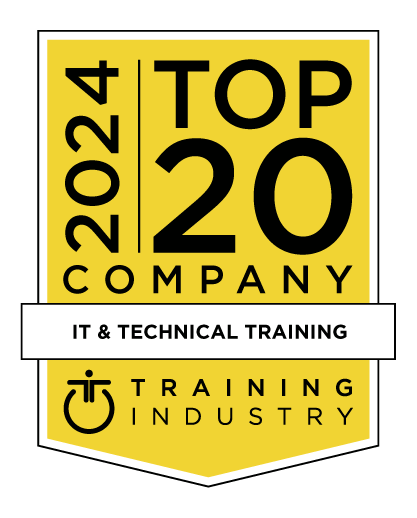title
Please take a moment to fill out this form. We will get back to you as soon as possible.
All fields marked with an asterisk (*) are mandatory.
Implementing Cisco Advanced Call Control and Mobility Services (CLACCM)
Course Description
Overview
The Implementing Cisco Advanced Call Control and Mobility Services (CLACCM) v1.1 training covers advanced call control and mobility services.You will learn how to use Cisco® Unified Communications Manager features to consolidate your communications infrastructure into a scalable, portable, and secure collaboration solution.
Through a combination of lessons and hands-on experiences, you will also learn about a wealth of other features such as Globalized Call Routing, Global Dial Plan Replication, Cisco Unified Mobility, Cisco Extension Mobility, Device Mobility, Session Initiation Protocol Uniform Resource Identifier (SIP/ URI) call routing, Call Admission Control, Cisco Unified Communications Manager Express and Survivable Remote Site Telephony (SRST) gateway technologies, Cisco Unified Board Element Call deployments, signaling and media protocols, call coverage, and time of day routing.
This training prepares you for the 300-815 Implementing Cisco Advanced Call Control and Mobility Services (CLACCM) exam.
Skills You'll Learn
- Gain the skills to deploy advanced call control and mobility services in Cisco Unified Communications Manager, Call Manager Express (CME) and SRST, Cisco Unified Communications Manager Express and advanced SRST gateway technologies, and Cisco Unified Border Element
- Get the knowledge for protocols, solutions, and designs to acquire professional-level and expert-level networking roles
Objectives
- Analyze and troubleshoot SIP, H.323, and media protocols
- Implement time-of-day routing, call park, call pickup, and meet-me conferences in Cisco Unified Communications Manager
- Implement call coverage in Cisco Unified Communications Manager
- Configure and troubleshoot Cisco Unified Communications Manager Device Mobility
- Configure and troubleshoot Cisco Unified Communications Manager Extension Mobility
- Configure and troubleshoot Cisco Unified Communications Manager Unified Mobility
- Implement Cisco Unified Communications Manager Express for SIP phones
- Implement globalized call routing within and between Cisco Unified Communications Manager clusters
- Implement Media Gateway Control Protocol (MGCP) fallback and Survivable Remote Site Telephony (SRST) in Cisco Unified Communications Manager and in Cisco IOS® XE gateways
- Implement Call Admission Control and Automated Alternate Routing (AAR) in Cisco Unified Communications Manager
- Implement URI calling in Cisco Unified Communications Manager for calls within a cluster and between clusters
- Troubleshoot multisite Cisco Unified Communications Manager deployments
- Implement Intercluster Lookup Service (ILS) between Cisco Unified Communications Manager clusters and enable Global Dial Plan Replication (GDPR)
- Configure and troubleshoot Cisco Unified Border Element
Related Courses
-
Implementing Cisco Advanced Call Control and Mobility Services (CLACCM)
CSC-CLACCM- Duration: 5 Days
- Delivery Format: Classroom Training, Online Training
- Price: 4,295.00 USD
-
Implementing Cisco Collaboration Cloud and Edge Solutions (CLCEI)
CSC-CLCEI- Duration: 5 Days
- Delivery Format: Classroom Training, Online Training
- Price: 4,300.00 USD
Self-Paced Training Info
Learn at your own pace with anytime, anywhere training
- Same in-demand topics as instructor-led public and private classes.
- Standalone learning or supplemental reinforcement.
- e-Learning content varies by course and technology.
- View the Self-Paced version of this outline and what is included in the SPVC course.
- Learn more about e-Learning
Course Added To Shopping Cart
bla
bla
bla
bla
bla
bla
Self-Paced Training Terms & Conditions
ONCE YOU ARE ENROLLED IN THIS COURSE YOU WILL NOT BE ABLE TO CANCEL YOUR ENROLLMENT. You are billed for the course when you submit the enrollment form. Self-Paced Virtual Classes are non-refundable. Once you purchase a Self-Paced Virtual Class, you will be charged the full price.
This is a Cisco Self-Paced virtual class; it is intended for students who do not need the support of a classroom instructor. If you feel you would better benefit from having access to a Subject Matter Expert, please check to see if an Instructor-Led version is available.
- Students will receive an access code within 1-3 business days.
- If purchasing a self-paced course for multiple students, the purchaser will receive the access codes and must distribute them individually to the students.
- Students have access to the course 24/7 and will need to read and follow all instructions carefully to complete the course successfully within their allotted time.
Q: How long do I have access to the course and the Labs within the course?
A: Labs are available for the length of your course subscription.
Q: Can I reset the course and start over?
A: No.
Q: Is there a time limit for the Trial (Demo)?
A: There is no expiration on registration to the trial versions. Access is capped not in time, but by the fact that only a select number of sections are unlocked within the content.'
Exam Terms & Conditions
Sorry, there are no classes that meet your criteria.
Please contact us to schedule a class.

STOP! Before You Leave
Save 0% on this course!
Take advantage of our online-only offer & save 0% on any course !
Promo Code skip0 will be applied to your registration
Purchase Information
title
Please take a moment to fill out this form. We will get back to you as soon as possible.
All fields marked with an asterisk (*) are mandatory.










